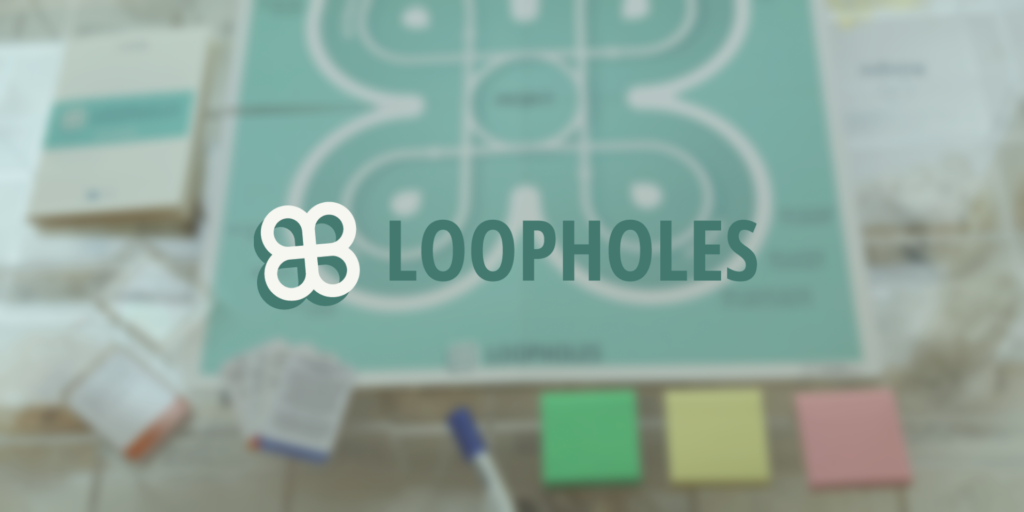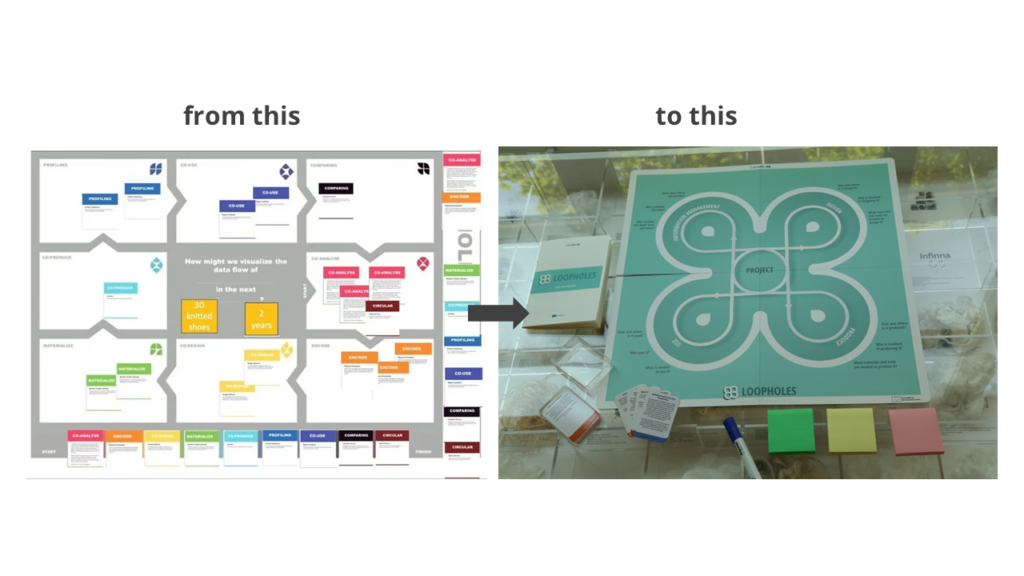Project
Loopholes, the sustainability game for fashion companies
CHALLENGE
The group is working on an ongoing project to develop the Loopholes game, a game that classifies as serious game. It sets a new set of questions to better achieve the end goal. Loopholes aims to help designers and fashion companies in:
- map current (as-is) competencies and stakeholder roles throughout their entire process/ecosystem
- understand/speculate on the impact of innovative technologies on their business/offering
- co-design new roles and ways of working (to-be)
- manage the digital transformation/change management process toward datafication/circularity
DESCRIPTION

Loopholes is a toolkit being developed within the context of the Transitions Erasmus+ Project, Co-funded by the European Union.
Our team supported this development by collaborating with Transitions partners from the Lectoraat Fashion Research & Technology of the Amsterdam University of Applied Sciences. The Loopholes serious game we are working on is a second version of the game, based on the concept developed for the initial version, by a team previously at the Digital Society School.

Researchers such as Casciani et al. (2022) argue for the urgency of depending on sustainable fashion that simultaneously considers social, environmental, economic, and cultural aspects driven by technological innovations instead of fast fashion, a source of complex problems for both humans and the planet. Multi-level fashion stakeholders are on their pathway toward understanding the urgency of relying upon sustainable fashion. Achieving this journey requires stakeholder shifts in distinct dimensions such as mindsets and business models (i.e., in designing, manufacturing, marketing, etc.) compelled by technological innovations and collaboration.
The project is around the game Loopholes. The name comes from the game’s aim which is to find the loopholes of a specific process in a company and make it improve and be more sustainable. The game is a method to help companies brainstorm. Achieving this goal is a real challenge because of different matters:
- Various stakeholders with different languages and understandings will play this game;
- Companies will play this game to improve different kinds of products and processes.
These two aspects make it difficult to build a universal game in terms of language and the actual flow of the game. The content of the game plays a crucial role. In a certain way, it defines the flow, the language, and the final outcome of the game. Since Loopholes is designed to help companies improve, and since improvement is by definition never-ending, the game itself is open-ended, there is no specific achievement that defines the end, the stakeholders will stop when they feel they reached their goal. To do this, the flow must be clear and effective.
Loopholes is played with a board and cards. There are four separate sets of cards that correspond to different relevant fields: digitalisation, sustainability, stakeholder engagement and business & finance. Each card consists of a text describing an innovative strategy in the field and some trigger questions. The cards are the guide of the game, players are spurred to discuss each aspect related to the company, this allows them to arrive at more sustainable solutions for the various phases that constitute the company. Eventually, Loopholes aims to trigger and engage a dialogue in which concerned stakeholders, e.g. (young) designers, manufacturers, etc. can speak up about the challenges facing the fashion industry while playing it. The game also allows the same stakeholders to understand their changing roles within the industry because of its digitalisation and datafication-driven circularity.
Check out our final solution and explore it in more detail!


